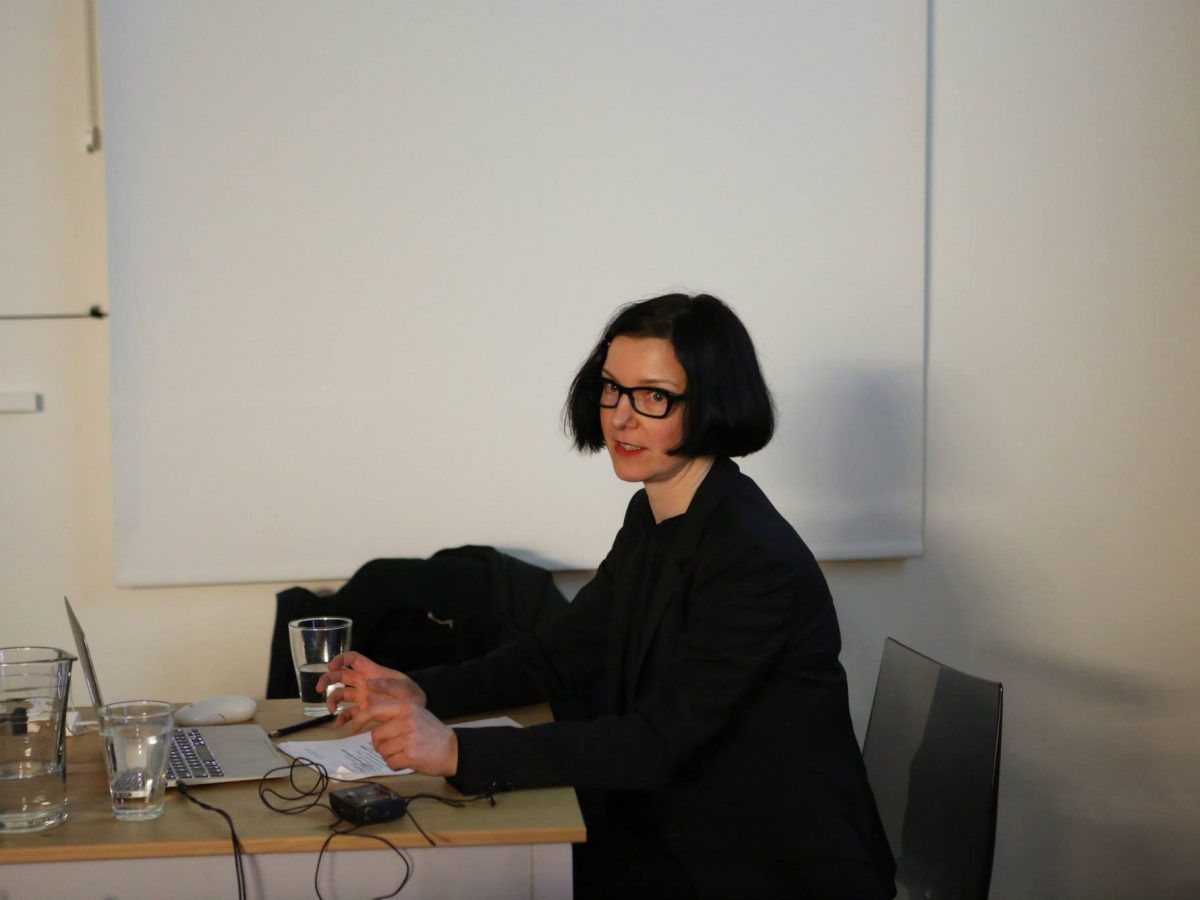The Extensions of Many: Seminars on Media Aesthetics part 3
Published
Download full program in PDF
The themes range from sonic art and theory of rhythm, through the emergence of narratives about multimedia systems in the amalgam of library science and peace activism, to a relation between early video art and ecological crisis. The speakers include Ina Blom, Florian Cramer, Knut Ove Eliassen, Olga Goriunova, Aud Sissel Hoel, Eleni Ikoniadou, and Femke Snelting. The series is programmed by Dusan Barok, founding editor of Monoskop.org currently based in Bergen, in collaboration with BEK, and held at Hordaland kunstsenter. This last event is taking place on March 25.
Wednesday, 25 March 2015, 18:30, HKS
Florian Cramer – Talking Past Each Other. On the Word Combinatorics of “Post”, “Media”, “Digital” and “Internet”
What makes the contemporary terms “post-media”, “no media”, “post-internet” etc. so confusing is their reference to greatly different, sometimes unrelated notions of “medium” and “media” that have historically coexisted in the arts and the humanities. The term “post-media”, for example, had two independent coinages and resulting different meanings, one in art criticism and another one in media philosophy. Now that art critical, media theoretical and continental philosophical debates are converging in new constellations and practices, concepts and terminology often get conflated without everyone being aware of it. This lecture will attempt to cut through the mess.
Florian Cramer, reader for new media and their impact on art and design at Creating 010/Willem de Kooning Academy, Rotterdam University of Applied Sciences, The Netherlands. Recent publications: Anti-Media. Ephemera on Speculative Arts (NAi 010 Publishers, 2013), What Is Post-Digital?, A Peer-Review Journal About (2014), http://www.aprja.net/?p=1318.
Olga Goriunova – Digital Subjects and the Questions of the Real
Whereas plastic was once imagined not only as a medium to artistically explore but also a social programme of revolutionary nature, plastic bags, toothbrushes, rubber ducks and other plastic debris are now the basis for the Pacific Trash Vortex, a major threat to marine and consequentially human life, a condition which cannot be simply described as ‘postplastic’. Analogically, instead of focusing on the questions raised by the current accounts of postmedia, I suggest to take a materialist approach to understand the nature of the multiple relations that arise within the thick distance between subjects and their data, digital objects, social media performances and other computational debris. When various kinds of data are pulled together to create forms of digital subjectivity, often proclaimed to be indexically linked to subjects, whether psychoanalytic, demographic or Foucauldian, it is exactly these forms of connection, change and continuity that don’t only indicate disciplinary frictions, but also raise the questions of political character, as well as the questions of what constitutes the real for all the parties involved.
Olga Goriunova is an Associate Professor at the University of Warwick. She recently published an edited volume Fun and Software: Exploring Pleasure, Pain and Paradox in Computing (Bloomsbury, 2014), that attempts to salvage some breathing space in what appears to be a monolithic neoliberal neo-Kantian metacomputational narrative. She is a co-editor of Computational Culture, a journal of software studies (http://computationalculture.net). She once made the Suicide Letter Wizard for Microsoft Word, and is now working on the questions of digital subjectivity, social media images, idiocy and nonsense, as well as the explorations of the limits in both ethico-aesthetic and ecological terms.
Knut Ove Eliassen – Aesthetic Technologies
The term “electronic arts” long had the ring to it of an oxymoron or a catachresis – a figure of speech that brings together contradictory elements or terms that belongs two distinctly different spheres. Due to the development over the last decades of disciplines such as media archaeology, digital humanities, ludology, archive aesthetics, computer culture, and the like, it has become much of a truism that the arts are not merely neutral media of expression but that aesthetic objects have always been imbued with technology. But then again, what does this imply? And what are the consequences? Taking as my starting point the media aesthetics developed in the wake of the work of German media scholar and historian Friedrich Kittler, I will give an overview of the major positions of the so-called Berliner Schule and discuss what I consider its major contribution to the study of aesthetics.
Knut Ove Eliassen is a professor in comparative literature at the Norwegian University of Science and Technology (NTNU) in Trondheim. With a background in history of ideas and philosophy he has published on 20th century French philosophy, aesthetics, media archeology and the literature and philosophy of the Enlightenment. He has also translated Michel Foucault, Friedrich Kittler, and Jean Baudrillard.
